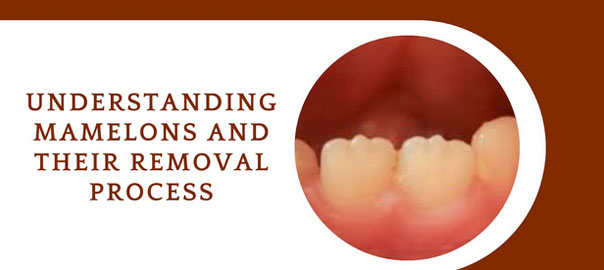
What are Mamelons and How are they removed?
Dental aesthetics play a crucial role in one’s confidence and self-esteem. A common issue that some individuals may face is the presence of mamelons on their teeth. Mamelons are small, rounded, and sometimes pointed projections on the incisal edges of newly erupted permanent incisor teeth.
They are a natural occurrence in the development of teeth and are more commonly observed in younger individuals. However, in some cases, mamelons may persist into adulthood, causing aesthetic concerns for some individuals.
What are Mamelons and Why Do They Form?
Mamelons are present on the incisal edges of newly erupted permanent incisor teeth. They are most commonly seen on the central and lateral incisors but can also appear on canines. These small protuberances result from the way teeth form and develop in the jaw.
During tooth development, the tooth germ forms in the jawbone and begins to grow. As the tooth erupts into the mouth, it initially has three lobes that form the incisal edge. These lobes merge together during eruption, creating a smooth surface. However, in some cases, the lobes do not entirely fuse, leading to the persistence of mamelons.
Are Mamelons a Dental Concern?
In most cases, mamelons are not considered a dental health issue. They are a normal part of tooth development and generally wear down gradually over time due to normal tooth function, such as chewing and biting. As a result, they become less prominent with age.
However, some individuals may find mamelons to be aesthetically displeasing and may seek treatment to have them removed.
How are Mamelons Removed?
Mamelons can be removed through a dental procedure known as “mamelon reduction” or “mamelonoplasty.” This procedure is performed by a qualified dentist or orthodontist and is typically considered a cosmetic treatment. Before considering mamelon reduction, it is essential for individuals to consult with their dentist to determine if the procedure is appropriate for them.
The Mamelon Reduction Procedure:
- Assessment and Planning:The first step in the mamelon reduction procedure is an examination by the dentist or orthodontist. They will assess the extent of the mamelons and discuss the patient’s goals and expectations. X-rays or digital scans may be taken to evaluate the teeth and underlying structures.
- Anesthesia:Local anesthesia is administered to ensure the patient’s comfort during the procedure.
- Mamelon Reshaping: Using dental instruments, the dentist or orthodontist carefully reshapes the mamelons to achieve a smooth and natural appearance. The amount of reshaping required depends on the size and prominence of the mamelons.
- Smoothing and Polishing:After the reshaping is complete, the teeth are smoothed and polished to ensure a seamless transition between the treated areas and the rest of the tooth surface.
- Recovery:The recovery period is typically minimal, with mild discomfort that can be managed with over-the-counter pain medication. Patients are advised to avoid consuming overly hot or cold foods and drinks for a short period after the procedure.
- Follow-up:The dentist or orthodontist will schedule a follow-up appointment to monitor the healing process and ensure the patient’s satisfaction with the results.
Mamelons are a natural occurrence in tooth development and are usually not a cause for concern. However, for those who find them aesthetically bothersome, mamelon reduction can be a viable option. It is essential to consult with a qualified dental professional to determine the most suitable course of action.
With modern dental techniques, mamelonoplasty can provide individuals with the confidence of a seamless and aesthetically pleasing smile. Remember, maintaining good oral hygiene and regular dental check-ups remain vital for overall dental health and well-being.
Leave a Reply
Leave a Reply
Explore More Similar Posts
Explore More Blogs


Leave a Reply